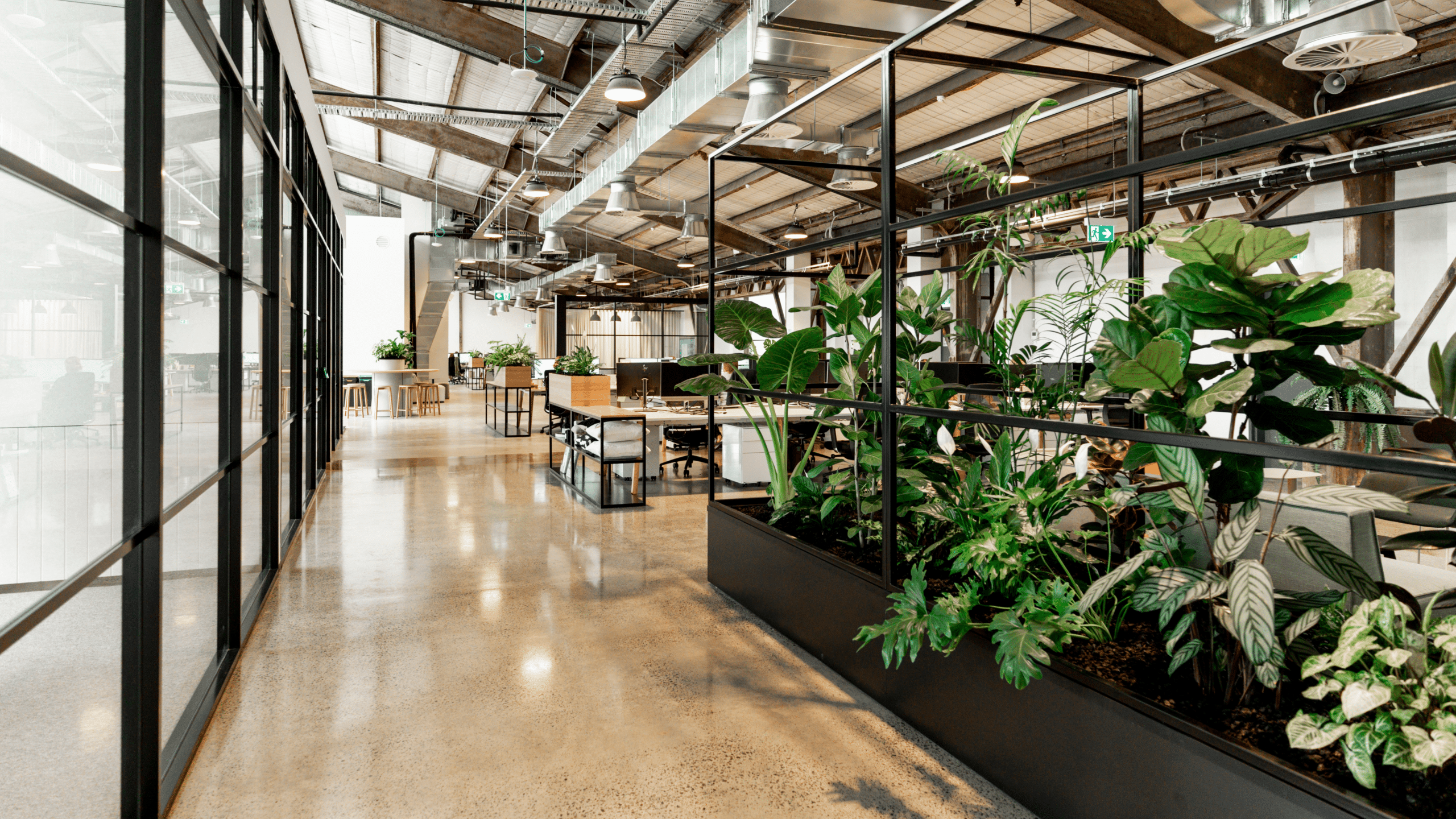
Biophilic design in the workspace is more than an aesthetic trend, it connects people to nature and has proven to significantly improve the mental and physical wellbeing of employees.
So, what exactly is it and how is it being incorporated in workspaces today?
What is biophilic design?
Biophilia is a term invented by psychoanalyst Erich Fromm to describe what he saw as humanity’s “passionate love of life and of all that is alive.” His hypothesis is that humans’ intrinsic connection with nature and other life-forms is genetically based – Source.
Naturally then, biophilic design is all about connecting building occupants to the natural world and all that is alive. It is an expression of the relationship between nature, human biology and buildings and is a philosophy, rather than an aesthetic, a style, or a trend – Source.
Stephen Kellert, Professor Emeritus at Yale University in the School of Forestry and Environmental Studies, pioneered six biophilic design principles to the built environment.
These principles are:
- Environmental features (characteristics of the natural environment and natural materials)
- Natural shapes and forms (mimicking shapes found in nature)
- Natural patterns and processes (ex. designs that stimulate a variety of senses, simulate the qualities of natural growth, or reflect the processes of aging and the passage of time.)
- Light and space (simulate the outdoors)
- Place-based relationships (unique geographical, ecological, and cultural characteristics of places and localities)
- Evolved human relationships to nature (ex. a sense of safety and protection, a balance of variety with regularity, igniting curiosity and exploration and producing a sense of accomplishment and mastery over our environment.) – Source 1, Source 2
Benefits of biophilic design in the workplace
In today’s fast-paced, tech-heavy, work-driven world, humans have become more distanced from nature and all its benefits. Biophilic design elements in the workplace can help to bridge that gap, and bonus – it has wonderful upsides on employee health and wellbeing. Some of the benefits to biophilic design in the workplace include improved mood, mental health, productivity, creativity, air quality, stress levels, as well as lower absenteeism and improved attraction and retention of staff – Source.
One study found that biophilic environments had larger restorative impacts than non-biophilic environments in terms of reducing physiological stress and psychological anxiety levels – Source. In support of improved productivity, a series of studies from Exeter University concluded that employees were 15% more productive in biophilic workspaces – Source. Employees in biophilic environments also tend to exhibit higher levels of focus and innovation, leading to increased efficiency in their tasks – Source. Regarding air quality, not only do we know that live plants improve it, but they also transpire through their leaves, creating a more humid environment. This helps to address a common ‘dry-air’ issue that a lot of heavily air conditioned spaces, like offices, face – Source.
In general, biophilic elements put humans in a more positive state of mind and we all know that positivity is contagious. When positivity makes its way around the workspace, it makes for a happier, healthier workforce (ie. Improved job satisfaction). Also, employees are more likely to stay in, and promote, a company that supports their overall health and wellbeing, resulting in improved attraction and retention.
Incorporating biophilia into workplace design
There are many ways to incorporate biophilic design into the workspace and new innovations are continuously being unveiled as the education of its benefits becomes more widespread. These are just some of the ways in which modern workspaces are introducing biophilia into workspaces – Source
Lighting
As much natural light as possible. Where natural light cannot be achieved, new technologies such as Circadian Lighting bring the effects, and with it the benefits, of natural light into the space.
Access to outdoor spaces
Real exposure to nature is key for rejuvenation and encouraging creative thinking.
Colour selection and combinations
Colour psychology is powerful and can evoke different human moods and emotions. Certain colours have been associated with physiological changes, including increased blood pressure, increased metabolism, and eyestrain – Source.
Natural textures and features
Utilising earthy materials like wood, stone, and water features brings tactile experiences reminiscent of the natural world into the office. These textures provide a sensory connection to nature.
Greenery
Greenery and plants are actual reminders of the outdoors. Integrating potted plants and vertical gardens enhances the aesthetic appeal, purifies air, and improves psychological comfort of the workspace.
Sensory triggers
Incorporating sounds that imitate nature, such as running streams and calming animal sounds or diffusing natural scents like pine trees and rain – Source.
Virtual reality, video and imagery
Making use of artwork, screens and VR capabilities to bring the outside in.
Elevating with sustainability
Some designers are taking biophilic design to the next level by using recycled elements to improve overall sustainability. This greatly appeals to Gen Z and Millennial generations who have high expectations of employers to be more sustainable.
Conclusion
A multisensory biophilic experience in the workspace is not just a trend – rather, it lays the foundation for optimal performance at the office – Source.


